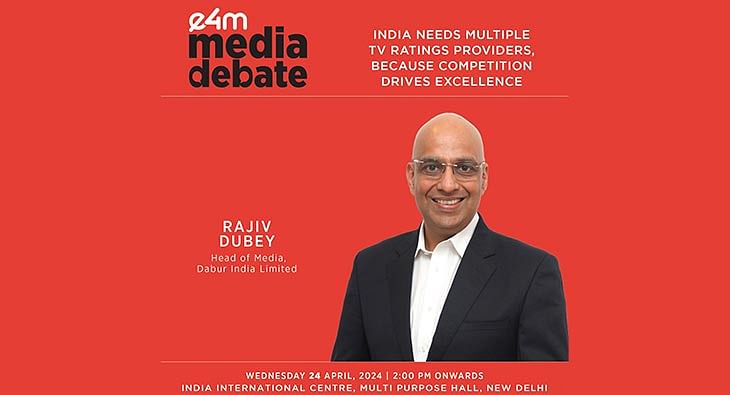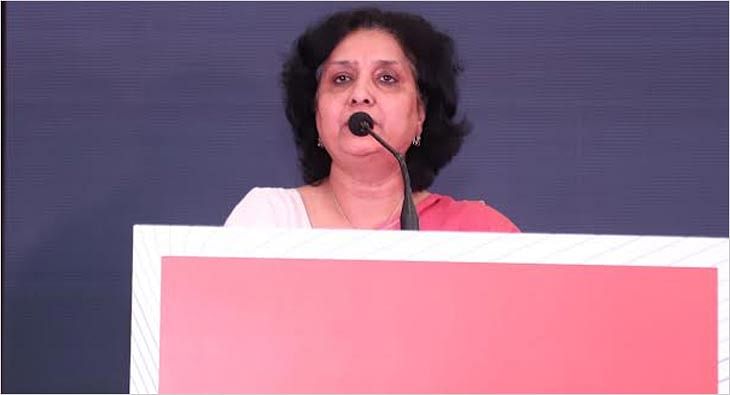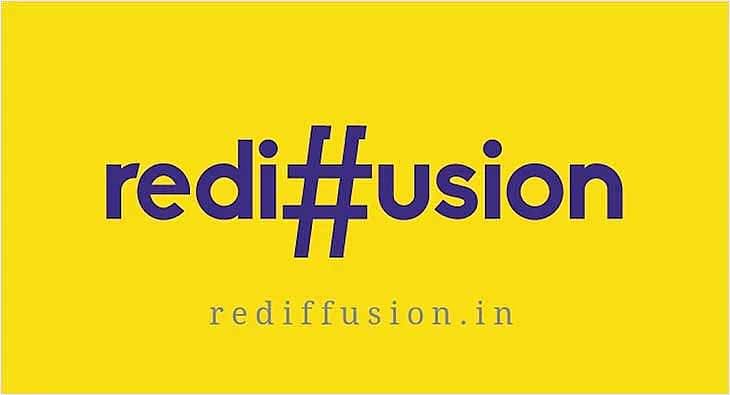COLORS Bangla unveils its biggest ever new content line-up
The channel will be presenting a new non-fiction show and four new fiction shows that will premiere in the months of August and September

COLORS Bangla has just announced an impressive line-up of 5 new shows including one musical reality show and four fictional dramas all of which will premiere in the months of August and September.
The channel has roped in the best from the Bengali entertainment industry including prominent producers like Nispal Singh Rane (Surinder Films) who has innumerable superhit movies and Prime Time TV shows, Snehasish Chakraborty (Blues Production) who has countless superhit TV shows and Shashi Sumeet who has more than 40 shows nationwide. The non-fiction show will be produced by Raj Chakraborty, the man behind the launch of various successful non-fiction shows in the Bangla television industry. The music reality show will be judged by some of the biggest names in the music fraternity. The COLORS Bangla entertainment extravaganza will bring acting stalwarts like Papia Adhikari, Debolina Dutta, Anjana Basu, Sudipa Basuback to the small screen with these shows. Doyens of popular Bengali music like Jeet Ganguly and Anupam Roy are doing the title tracks for the shows. COLORS Bangla is all geared up to enchant its audiences with never before entertainment.
Speaking on the launch Sagnik Ghosh, Business Head, COLORS Banglasaid, “We at COLORS Bangla have always endeavoured to bring to our viewer’s quality and entertaining content and now we are all set for the launch of the first tranche of our content line up. Through our characters & stories, we want to alleviate the anxiety & adversities that the Bengali society and our core viewers are facing today. Our shows will encourage people to dream and aspire and provide our existing as well as new viewers with superior quality content and an enhanced viewing experience. “
A glimpse of the upcoming content line-up:
MOU ER BARI
The story is about the life and struggles of a woman who marries into a new family but gets her own parents to live under the same roof. Her husband is her support in her endeavours.
and helps her achieve everything that she ever wants. Mou played by popular actress Adrija Roy is a vivacious girl who is modern but deeply rooted to her ideals. Roopam played by Abhishek- a talented actor from North Bengal is a good-looking, flamboyant, lazy, happy-go lucky guy. The show has been produced by Surinder Films.The show will go on air from 30th August every day at 6.30 pm.
TEEN SHAKTIR AADHAR – TRISHUL is the story of three sisters, Tara, Durga & Kali hailing from a poor, village-based weaving family. Affluent and powerful, Rajnandini is a fashion tycoon renowned worldwide. Circumstances bring the three sisters and Rajnandini face to face, and the sisters seek to avenge the humiliation meted out to them by Rajnandini. Debolina Dutta plays the role of Rajnandinialongwith powerful star cast like Tumpa Ghosh, Sudipta Chakraborty. The show has been produced by Snehasish Chakraborty. The show will go on air from 30th August every day at 7.00 pm.
MON MANE NA
Mon Mane Na is a classic rugged love story between two diametrically opposite characters. This is the story of the love and hate relationship of Rudra, an uneducated and rowdy villager and Gauri, an educated woman who values principles above anything else. Played by PallabiDey, Gauri is a woman of principles and does not tolerate anything wrong. Rudra: A bodybuilder and wrestler. The muscleman of the local political leader. A rowdy – rustic – short-tempered man. Despite everything, Rudra has a heart of gold played by Sam. The show will be produced by Surinder Films. Anjana Basu plays the role of antagonist as Boroma and the title song has been done by none other than Jeet Ganguly. The show will go on air from 30th August every day at 7.30 pm.
DUTTA AND BOUMA
An unusual love story where the role of daughter-in-law takes precedence over that of a wife. Can daughter in law take charge of the family business? The story is set on a Traditional Jewelry business family. Papiya Adhikari plays one of the most important roles. The story will be produced by Shashi Sumeet production. The show will go on air from 30th August every day at 8.00 pm.
SANGEET ER MOHAJUDDHO
An epic saga of a musical battle to be hosted by none other than popular actor, anchor Mir. The show produced by Raj Chakroborty, will have the best of talent- come together on one platform and fight for the crown. The show will be judged by the best names from the industry including Ustad Rashid Khan, Lopamudra Mitra, Jeet Gannguli and Abhijeet Bhattacharya.The show will go on air from 4th September every Saturday and Sunday at 8.30 pm.
The launch will be supported by 360-degree marketing and communication campaign encompassing TV, cable, on-ground, radio, outdoor as well as digital platforms.The channel is also planning for a fresh identity on the day of the launch.
With COLORS Bangla, all set to launch its new content lineup, all ardent fans can keep themselves entertained from the comforts of their homes! So, block your date with COLORS Bangla starting this August.
Read more news about Television Media, Digital Media, Advertising India, Marketing News, PR and Corporate Communication News
For more updates, be socially connected with us onInstagram, LinkedIn, Twitter, Facebook Youtube, Whatsapp & Google News
The current ratings system lacks trust: Rabindra Narayan, PTC Network
During the recently held e4m media debate, Rabindra Narayan, MD and President, PTC Network, spoke for the need for multiple TV rating providers
The current system of ratings by BARC lacks trust and credibility, said Rabindra Narayan, MD and President, PTC Network, at the e4m debate on Wednesday while asserting the need for multiple rating agencies in the broadcast ecosystem.
The e4m media debate on ‘India needs multiple TV rating providers because competition drives excellence’, held in New Delhi, was chaired by Anurag Batra, Founder of e4m and Editor-in-Chief of Businessworld Media Group.
During the debate, Narayan, who was speaking for the motion with other panellists, questioned the Broadcast Audience Research Council (BARC) ratings, particularly for news channels saying that politicians spending money to advertise on news channels and not GECs, is proof enough that the genre is doing much better than the ratings given by BARC.
“The fact that we are having this discussion, implies that the current system lacks trust. It lacks credibility. BARC analyses only linear TV that is beamed and received through satellite and cable. TV viewing today is not just linear TV, it also has several forms like connected TV and Fast TV coming on the same screen but BARC is not measuring it,” he said.
Narayan further said that it was time to innovate and look at content rating rather than just television rating points.
“As per BARC, news genre reach is 6-7% in the entire country, if that is true then why are politicians eager to spend on advertising on news channels? Why not on GECs? Why all the money spent by advertisers to reach maximum consumers, based on this Bible (BARC) which is junk? Why are we fighting for TV rating points and not content rating points when the technology and the system is changing?
“The current system of ratings (by BARC) is flawed, biased as it is controlled by a handful of people. Broadcaster lobby is controlled by four business houses so it will always remain in their favour. The data shows it,” he argued.
In his concluding remarks, Narayan said that BARC needs to improve and for that it does not even need to invest in more meters than it already has because cable operators and DTH are now digitised.
“They don’t even need to invest more. They don’t even need more meters than the ones installed already because every cable operator is now digitised and has two-way addressable communication available,” he said.
e4m Media Debate 2024: Call for multiple ratings agencies to break monopoly
Industry players discussed the authority of the current ratings system and whether having multiple agencies will cause increased complexities, discrepancies and expenses
Indian TV news media and advertisers today rely solely on the data released by the Broadcast Audience Research Council (BARC) India to strategise media plans and budgets.
Hence, many suggest having multiple rating systems which will allow for a more nuanced understanding of viewership patterns across different demographics.
Rabindra Narayan, MD and President, PTC Network; Mona Jain, Chief Revenue Officer, Zee Media, and Karthik Sharma, Group CEO, Omnicom Media Group believe a multi-ratings system will drive excellence amidst competition.
On the other hand, multiple ratings systems may also present challenges such as increased complexity, potential discrepancies in ratings, and higher costs for broadcasters as well as advertisers.
The current system of ratings is “flawed” and “biased, as it is controlled by a handful of people,” was the view of the industry veterans who advocated the need for multiple rating agencies instead of just one, which is currently the BARC, saying “monopoly makes people complacent”
During the debate, things got intense when some of the panellists, who were speaking for the motion, questioned BARC ratings, particularly for news channels saying that politicians spending money to advertise on news channels and not GECs, is proof enough that the genre is doing much better than the ratings given by BARC.
To present a viewpoint against the motion, Chintamani Rao, Strategic Marketing and Media Consultant, Rajiv Dubey, Head of Media, Dabur India, and Varun Kohli, Director and CEO, Bharat Express News Network joined the debate at e4m’s Media Debate in New Delhi. Dr. Annurag Batra, Chairman and Editor-in-Chief, BW Businessworld Media Group and Founder, e4m Group, chaired the debate.
Jain opened the discussion and said, “There is a dependency of an advertiser to take up a particular media plan via the agency. On the other hand, the broadcaster is absolutely at the mercy of the measurement system which decides where you rank. The issue is nobody looks at what the reality on ground is. Hence, I have started telling agencies and advertisers to also look at my digital platform’s ranking but the rating in BARC still holds significant value for them.”
She further suggested we should have an authenticated, validated, acknowledged currency which is recognised and valued by advertisers and agencies as well.
Presenting an opposing stand, Rao explained, “There many doubts about BARC and its functioning but I continue to maintain that audience measurement is no business of the government.”
At the end of the day, it is not about the number of vendors but how they are managed. Two poorly managed are not better than one, he added. The key issue is that BARC is dominated by one of its constituents and that is the one which is being measured.
“If advertiser’s money fuels the entire media ecosystem, why did they accept a structure with Indian Broadcasting & Digital Foundation (IBDF) at 60 percent?” questioned Rao.
Sharma, who joined virtually, expressed that if we forget the industry for a while, why do we need the NSE and BSE? Why do we need CIBIL and Experian? The short answer is innovation and competition. If there would be no competition, we would have one brand in every category we operate in.
“Even in a market like the USA, which has the largest AdEx market, there are two systems. Even the UK, Australia, Malaysia, Philippines and so many more countries have two audience measurement systems. In a largely populated country like India two systems will help in better sampling and segmentation,” he added.
Dubey took the stage right after and spoke about how one, two or multiple rating systems don’t matter to an advertiser. At the end of the day, it should help the brand sell. His objective is to reach out to the consumers in the cheapest possible manner.
“The idea of BARC was to have a robust system which could measure everyone well. Have we been able to do that? Probably yes or probably no,” he said.
With changing times, the audience needs have changed and NCCS was a system that measured the class of people based on the ownership of consumer durables. But now, the newly proposed ISEC fulfils those gaps.
Consumers have also started consuming content on different platforms, more towards digital and OTT. Dubey believes, “We haven’t been able to measure that audience correctly yet. Hence, the Indian TV industry needs one system and that system needs to be strengthened in such a way that it measures TV and digital audience equally.”
On having multiple audience measurement systems, the Dabur spokesperson said, “To solve the problem, you should not create another problem, but fix the problem instead.”
Narayan of PTC, who stood for the motion, expressed, “The fact that we are standing here and debating the issue, implies the current system lacks trust and credibility. We are also setting the premise that by TV ratings, we only mean linear TV ratings because that is what BARC does.”
He further shared that BARC does measurement via image mapping and hence, when any channel puts its watermark on any platform, it should become measurable for BARC since they already have the technology for it.
“Then why don't they? Because they need more focus on analysis, not more investment. The trouble is the ecosystem is not allowing the expansion of those ratings,” he added.
Today, BARC says 9 out of 100 people watch PTC, which is impossible and advertisers bargain for the ad rates accordingly. The channel today continues to invest in good shows but advertiser interest is low due to BARC’s data. If there is any truth to this, why wouldn’t players like PTC fight for multiple ratings systems?
“When Chandrayaan was launched, everyone in the world and India was watching it but if you see the BARC data, that particular week the ratings of the news genre went down. Is that even possible? News genre is much higher than what BARC is projecting,” Jain added.
Even on a day like the launch of Chandrayan, there was no spike on BARC data. Jain and Narayan both believe the current system is flawed and biased because it is controlled by a handful of people.
“The fact that we are having this discussion, implies that the current system lacks trust. It lacks credibility. BARC analyses only linear tv that is beamed and received through satellite and cable. TV viewing today is not just linear tv, it also has several forms like connected TV and Fast TV coming on the same screen but BARC is not measuring it,” Narayan said.
Narayan further said that it was time to innovate and look at content rating rather than just television rating points.
“As per BARC, news genre reach is 6-7% in the entire country, if that is true then why are politicians eager to spend on advertising on news channels? Why not on GECs? Why all the money spent by advertisers to reach maximum consumers, based on this Bible (BARC) which is junk? Why are we fighting for TV rating points and not content rating points when the technology and the system is changing?
“The current system of ratings (by BARC) is flawed, biased as it is controlled by a handful of people. Broadcaster lobby is controlled by four business houses so it will always remain in their favour. The data shows it,” he argued.
Kohli of Bharat Express, said, “BARC came into existence because publishers wanted a different rating system and then a mechanism was conceived. Now, questioning that system just because ratings aren’t in the right proportion or it doesn’t map digital audiences and to further ask for a separate body, I dont think is the right way.”
The industry needs to come together and exercise jurisdiction with BARC to tell them what more is needed and where they can get better, he suggested as a solution.
Rao also suggested it is better to have an aggregator rather than multiple players. In that case, the aggregator can also become the provider of data. BARC can always collect multiple data from various sources and present it.
The mapping of the audience correctly will also solve the problem in a way, which will be done with ISEC majorly. Having a unified measurement is also another solution, said Dubey.
According to Sharma, “Having more than one player will definitely fuel innovation and have a little competition, which is good. Different rating systems could also focus on different target segments, cohorts and more.”
“We need to focus on screens and not linear tv or digital. It is a screen-based world and people are just consuming content which is meaningful for them. So different types of consumptions require different types of measurements. My argument is innovation is critical as it is high time.
“Consumer is looking at the screen through mobile or TV sets. How are we measuring it? Some competition is healthy. It is important to have a mindset of how one system can help the other. The current system is not wrong but the newer system can enhance what we have,” he said.
Narayan concluded, “Television viewing and consumption has changed. Either BARC grows up to the changing times or others should come in and fill the gap. The market forces will decide who will remain and who will go, whose data is authentic and whose is not. There is no need for a debate here.”












 Share
Share